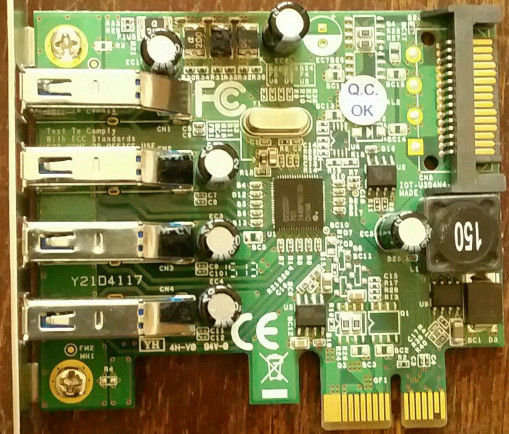Mikrotik CRS236-24S+2Q+RM switch: one year usage summary
Posted by Polynomial-C on
Mikrotik is known for its cheap 10GBit/s switches. That's the reason I bought one of these back in 2021. Although buying 10GBase-T transceivers is not that cheap, in the end I replaced my good ol' Netgear S3300-28X with the Mikrotik CRS236-24S+2Q+RM running SwOS-2.13. I know the switch can also run RouterOS but to be honest, I do not like the complexity of RouterOS, nor do I need an OS on my switch that provides lots of functionality I definitely will never use (on a switch).
Unfortunately, SwOS comes with a couple of drawbacks:
Now all these drawbacks are not present in RouterOS but still, that one is totally overloaded with functionalities one never needs in a L2 switch. Furthermore, one small misconfiguration in RouterOS and 10GBit/s transfer speeds are gone because everything gets routed over the switch CPU which is only connected to the switch chip with a 1GBit/s line.
There's one really annoying bug in SwOS-2.13 though, that only recently got confirmed by Mikrotik: The two QSFP+ ports refuse to re-establish a link connection once the remote side gets rebooted. In order to re-establish the link, I found three possible solutions:
And these are the actions that do not work and will not solve the link issue:
Mikrotik promised a fix for a future SwOS release but I doubt this release will come anytime soon as their priority clearly is with RouterOS (where - again - this issue is not present).
Besides these issues the switch performs really great and - when using a proper transfer protocol - provides reliable 10GBit/s on all of its ports. In summary I do not regret my decision and once Mikrotik finally puts some love into SwOS again, this will become a very nice and satisfying switch for my home network.
Unfortunately, SwOS comes with a couple of drawbacks:
- SwOS has a limited password length: It accepts twelve chars but not 20. I didn't check if twelve really is the limit but SwOS refuses to save passwords with 20 chars.
- No ssh connections possible: All SwOS provides is a very basic http web interface.
- No https connections possible: The web-interface can only be accessed via http.
Now all these drawbacks are not present in RouterOS but still, that one is totally overloaded with functionalities one never needs in a L2 switch. Furthermore, one small misconfiguration in RouterOS and 10GBit/s transfer speeds are gone because everything gets routed over the switch CPU which is only connected to the switch chip with a 1GBit/s line.
There's one really annoying bug in SwOS-2.13 though, that only recently got confirmed by Mikrotik: The two QSFP+ ports refuse to re-establish a link connection once the remote side gets rebooted. In order to re-establish the link, I found three possible solutions:
- Reboot the switch. (most effortful solution as the entire network connected to the switch is down while the switch performs the reboot)
- Un-/replug the QSFP+-cable at the switch. (similarly effortful)
- Toggle auto negotiation from "auto" to "40G" or vice versa.
And these are the actions that do not work and will not solve the link issue:
- Reboot the remote device again.
- Un-/replug the QSFP+-cable at the remote side.
- Replace the remote NIC (if possible).
- Use a different QSFP+ cable.
Mikrotik promised a fix for a future SwOS release but I doubt this release will come anytime soon as their priority clearly is with RouterOS (where - again - this issue is not present).
Besides these issues the switch performs really great and - when using a proper transfer protocol - provides reliable 10GBit/s on all of its ports. In summary I do not regret my decision and once Mikrotik finally puts some love into SwOS again, this will become a very nice and satisfying switch for my home network.
